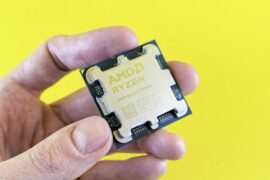This article may contain references to products or services from one or more of our advertisers or partners. We may receive compensation when you click on links to those products or services. Nonetheless, our opinions are our own.
For investing, the sheer number of options available can be overwhelming. Among the most popular choices are Exchange-Traded Funds (ETFs) and mutual funds, which offer unique advantages and cater to different investment strategies. You may have heard friends or family debate the merits of one over the other, or perhaps you’ve come across articles that extol the virtues of both. But what do these financial vehicles mean for you? Understanding the key differences between ETFs and mutual funds is crucial in deciding which option aligns best with your financial goals and risk tolerance. We’ll break down the essential characteristics of each, highlight their pros and cons, and help you navigate the often confusing world of investment choices. Whether you’re just starting your investing journey or looking to refine your portfolio, this guide will give you the insights you need to make informed decisions. Let’s dive in!
- Understanding the Core Differences Between ETFs and Mutual Funds
- Exploring Cost Structures: Which Investment Is More Affordable for You
- Liquidity and Trading Flexibility: How These Factors Impact Your Investment Strategy
- Tax Efficiency: Making the Most of Your Investment Returns
- Choosing the Right Fit: Factors to Consider for Your Financial Goals
- Frequently Asked Questions
- Recommended Reads
Understanding the Core Differences Between ETFs and Mutual Funds
When choosing between ETFs and mutual funds, it’s essential to recognize some core differences that could substantially affect your investment strategy. ETFs (Exchange-Traded Funds) are typically traded like stocks on an exchange, meaning their prices fluctuate throughout the day based on market demand. This feature allows you to capitalize on real-time market conditions. Mutual funds are managed more traditionally, with shares bought or sold at the end of the trading day based on the fund’s net asset value (NAV). This distinction can affect your trading versatility and timing when executing your investment strategies.
In addition, consider the cost structures of both options. ETF trading usually involves a commission fee per transaction, though many platforms now offer commission-free trading, minimizing costs for frequent traders. Meanwhile, mutual funds often come with management fees and, in some cases, sales loads that can eat into your returns over time.
Look at these key differences:
- Trading Flexibility: ETFs offer intraday trading; mutual funds do not.
- Cost Structure: ETFs may have lower fees; mutual funds can feature management and sales fees.
- Investment Minimums: Mutual funds frequently require minimum investments; ETFs can be bought per share.
| Feature | ETFs | Mutual Funds |
|---|---|---|
| Trading Type | Real-time | End-of-day |
| Fees | Lower (usually) | Higher (can include sales fees) |
| Minimum Investment | One share | Varies |
Understanding these differences can help you make informed decisions that align with your financial goals. Each investment vehicle has its strengths and weaknesses, and the right choice depends on your investing style and objectives.
Exploring Cost Structures: Which Investment Is More Affordable for You
When considering your investment options, it’s vital to examine the cost structures associated with ETFs and mutual funds. Understanding these costs can significantly affect your overall returns, especially in the long run. Here is a simple comparison to guide you through the process:
| Cost Factor | ETFs | Mutual Funds |
| Expense Ratios | Generally lower (around 0.2% to 0.5%) | Higher (typically 0.5% to 1.5%) |
| Management Fees | Usually minimal | May include additional management fees |
| Trading Costs | Commission fees may apply | No trading costs, but may have front-end or back-end loads |
One key aspect to consider is how you will purchase these investments. ETFs are traded on stock exchanges, meaning that you may face trading commissions, which can add up if you make frequent trades. Mutual funds often come with loaded fees, which could either be a percentage of your investment or a flat fee, depending on the fund’s structure. Taking a moment to crunch the numbers and calculate potential costs can help you determine which option aligns better with your financial goals and investment strategy.
Liquidity and Trading Flexibility: How These Factors Impact Your Investment Strategy
Regarding investing, liquidity and trading flexibility are crucial factors that can significantly shape your investment approach. Consider the convenience of accessing your funds: ETFs offer the ability to buy and sell shares throughout the trading day, just like stocks. This means you can quickly react to market changes or adjust your positions without the delays common with mutual funds, which only trade once. Imagine needing to capitalize on a market opportunity or minimize losses—a trade on an ETF can be executed almost instantly, giving you an edge when timing is vital.
Another essential point is the impact of these factors on your overall investment strategy.
- Portfolio Control: With ETFs, you maintain more control over your purchase price and can place limit orders whenever desired.
- Cost Efficiency: The ability to trade frequently with ETFs can be exceptionally favorable if you use a broker with low or no commissions, allowing for cost-effective strategies.
- Market Timing: ETFs’ real-time pricing can help you make decisions based on your market outlook rather than being constrained by a mutual fund’s end-of-day pricing.
Tax Efficiency: Making the Most of Your Investment Returns
When considering investment options, it’s essential to prioritize tax efficiency, as it can significantly influence your overall returns. Both ETFs and mutual funds have distinct tax advantages, and understanding these can empower you to make wiser financial decisions. ETFs typically structure their trades in a way that allows for a more tax-efficient operation due to their unique creation and redemption process. This means they often generate fewer capital gains distributions than mutual funds, which may be beneficial if you want to minimize your tax impact.
| Investment Type | Average Annual Capital Gains Distributions (%) |
| ETFs | 0.2% |
| Mutual Funds | 1.0% |
Choosing the Right Fit: Factors to Consider for Your Financial Goals
When selecting between ETFs and mutual funds, consider their liquidity and trading flexibility. ETFs are traded on stock exchanges, allowing you to buy and sell them throughout the trading day like a stock. This means you can react quickly to market changes, which can be a significant advantage if you value real-time pricing. Conversely, mutual funds are bought and sold at the end of the trading day, meaning you won’t know the exact price at which your order will be executed until the market closes.
| Expense Type | ETFs | Mutual Funds |
| Expense Ratio | Usually lower | Generally higher |
| Brokerage Fees | Possible commissions | No commissions (in many cases) |
| Minimum Investment | Cost of one share | Variable (often $1,000 or more) |
Frequently Asked Questions
What are ETFs?
ETFs, or exchange-traded funds, are investment funds traded on stock exchanges. They hold a collection of assets, like stocks or bonds, and, like individual stocks, their shares can be bought or sold throughout the trading day.
What are mutual funds?
Mutual funds are investment vehicles that pool money from multiple investors to purchase a diversified portfolio of assets. Unlike ETFs, mutual fund shares are bought or sold at the end of the trading day at the net asset value (NAV).
Can I invest in both ETFs and mutual funds?
Absolutely! Many investors choose to include ETFs and mutual funds in their portfolios to take advantage of each offer’s benefits. This can help diversify investments and align with different financial goals and styles.

Reviewed and edited by Albert Fang.
See a typo or want to suggest an edit/revision to the content? Use the contact us form to provide feedback.
At FangWallet, we value editorial integrity and open collaboration in curating quality content for readers to enjoy. Much appreciated for the assist.
Did you like our article and find it insightful? We encourage sharing the article link with family and friends to benefit as well - better yet, sharing on social media. Thank you for the support! 🍉
Article Title: ETF vs. Mutual Fund: What’s the Difference?
https://fangwallet.com/2025/02/17/etf-vs-mutual-fund-whats-the-difference/The FangWallet Promise
FangWallet is an editorially independent resource - founded on breaking down challenging financial concepts for anyone to understand since 2014. While we adhere to editorial integrity, note that this post may contain references to products from our partners.
The FangWallet promise is always to have your best interest in mind and be transparent and honest about the financial picture.
Become an Insider

Subscribe to get a free daily budget planner printable to help get your money on track!
Make passive money the right way. No spam.
Editorial Disclaimer: The editorial content on this page is not provided by any of the companies mentioned. The opinions expressed here are the author's alone.
The content of this website is for informational purposes only and does not represent investment advice, or an offer or solicitation to buy or sell any security, investment, or product. Investors are encouraged to do their own due diligence, and, if necessary, consult professional advising before making any investment decisions. Investing involves a high degree of risk, and financial losses may occur including the potential loss of principal.
Source Citation References:
+ Inspo











































